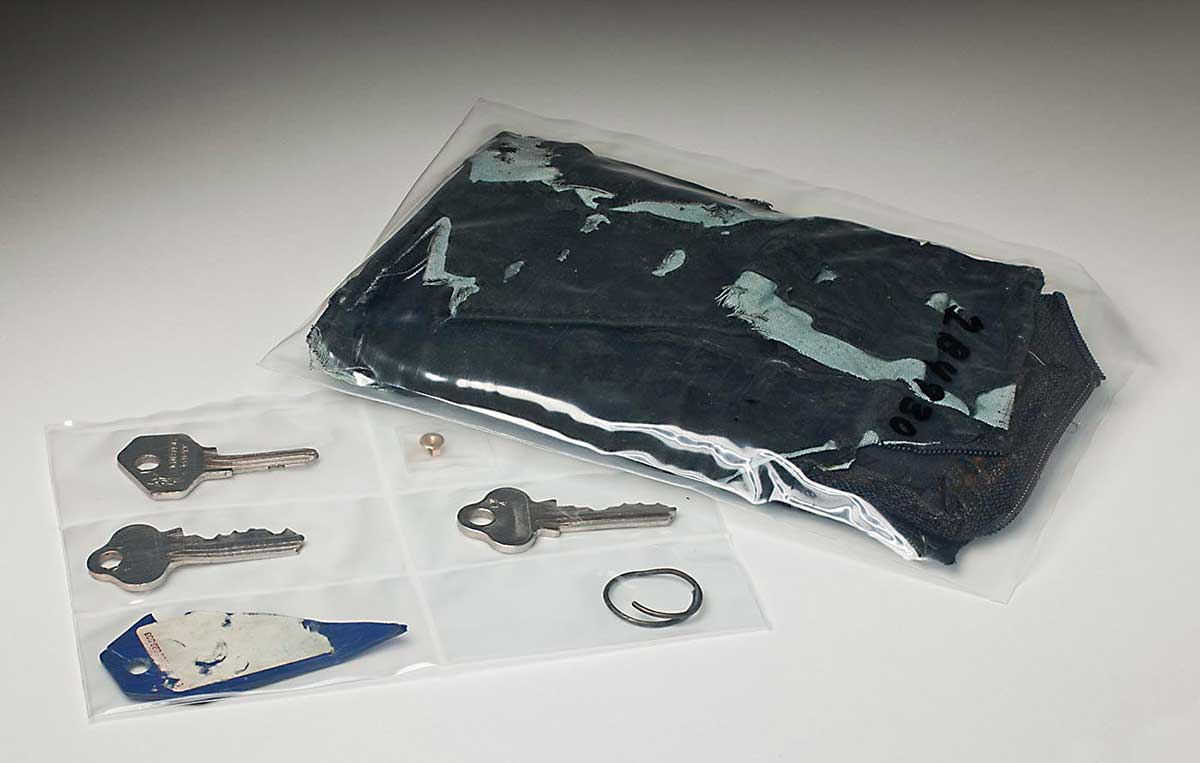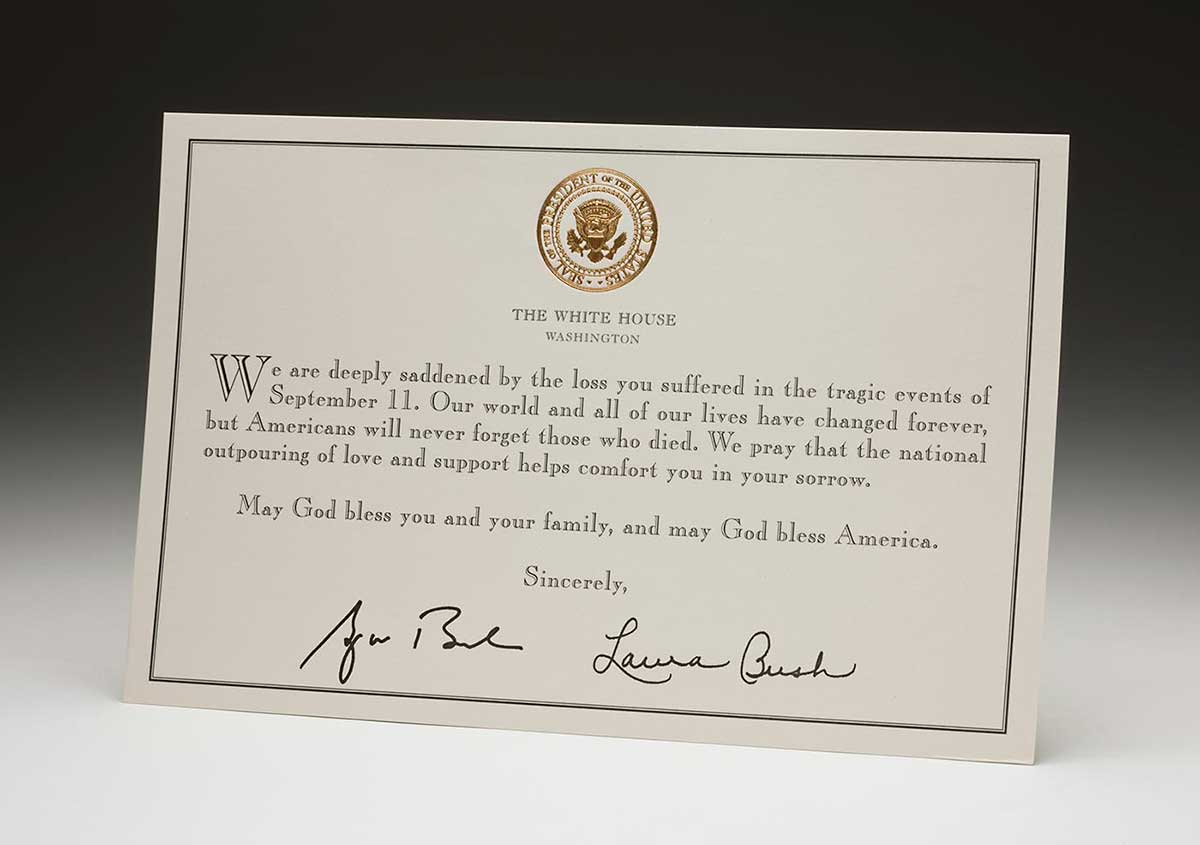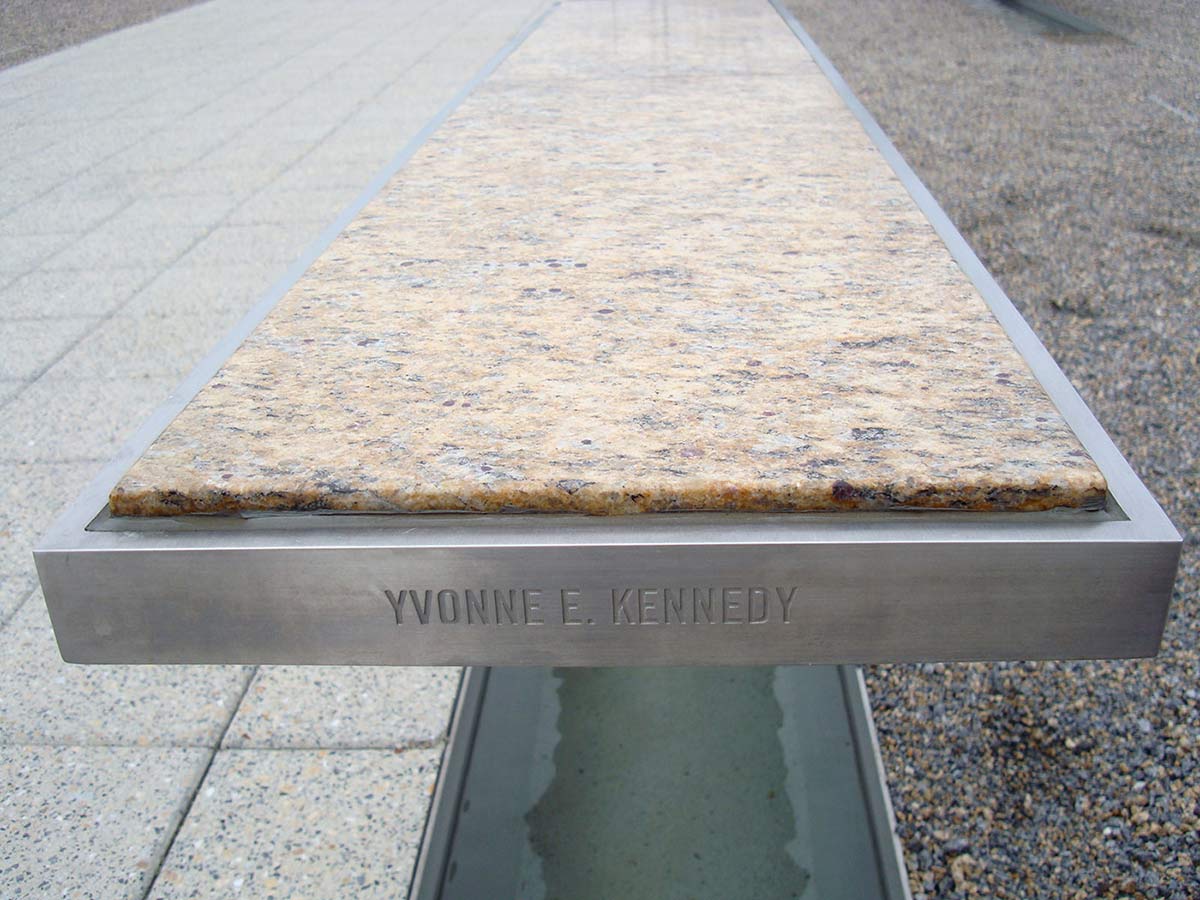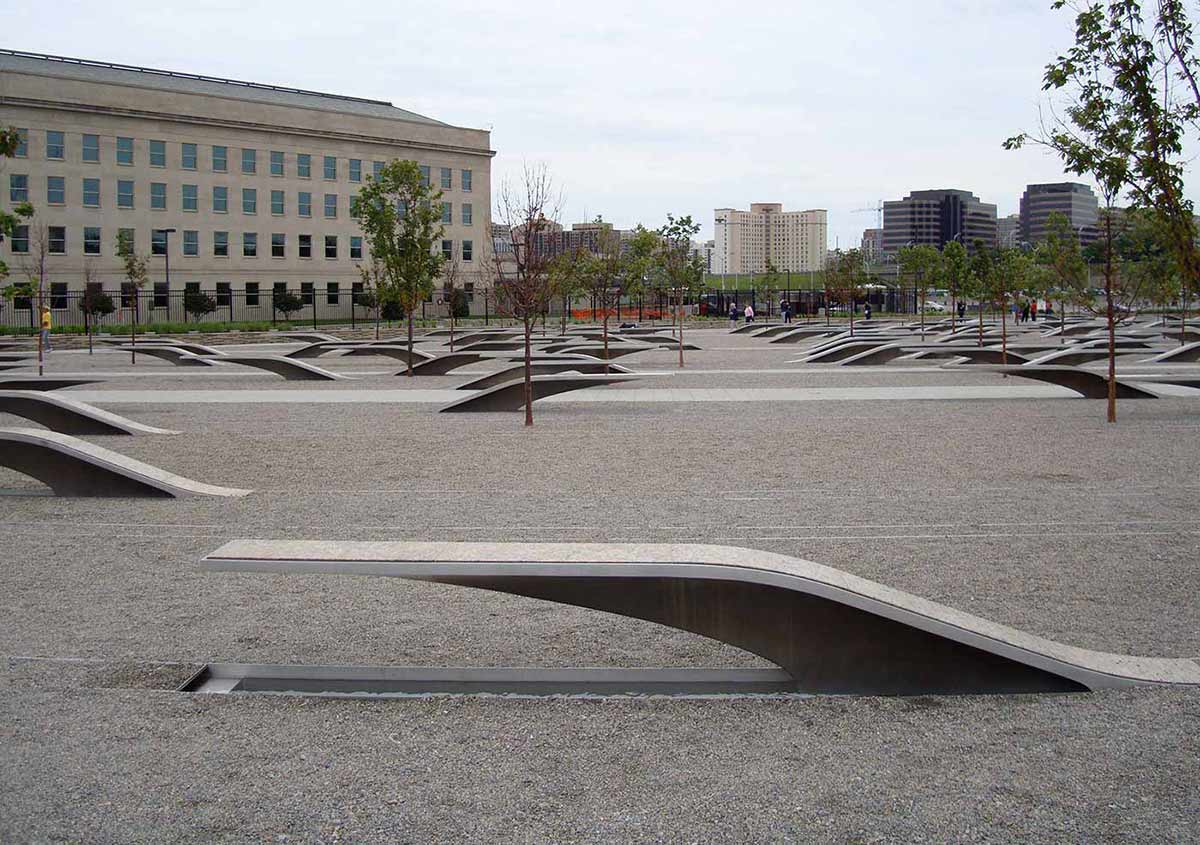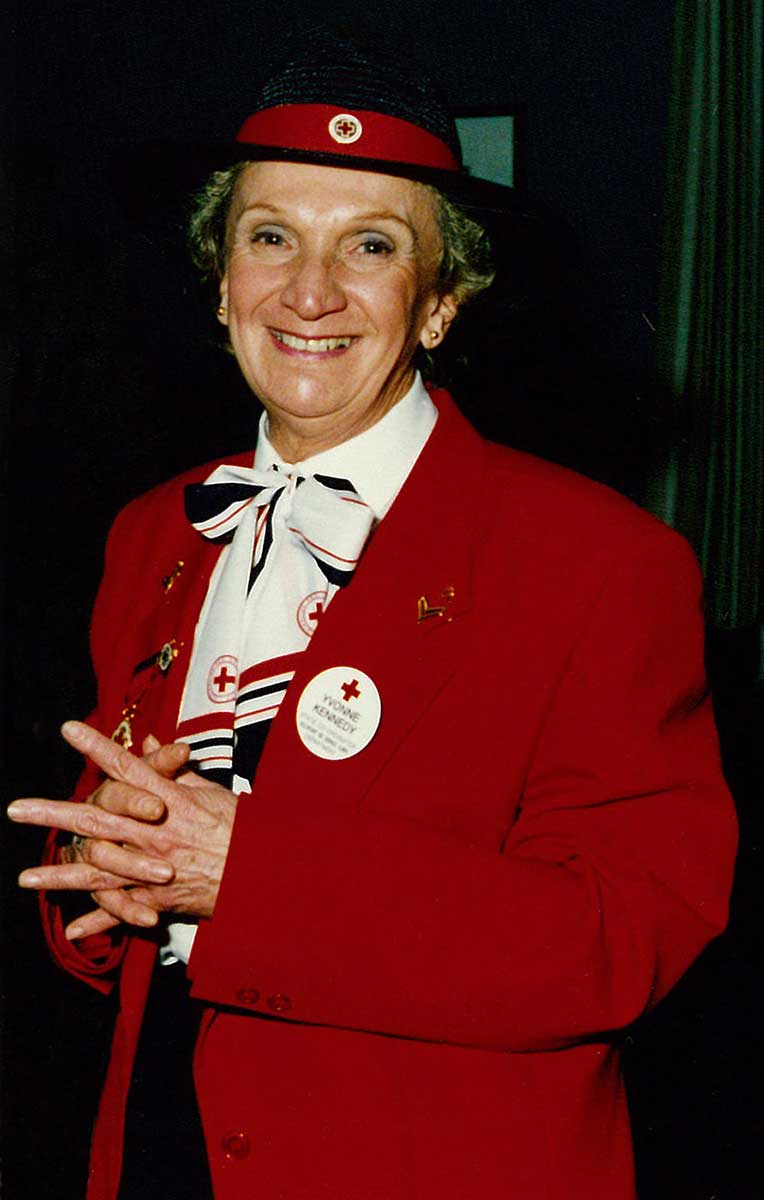
A collection of personal objects relating to the life and death of Yvonne Kennedy, one of 10 Australians killed in the September 11 terrorist attacks in America, is held by the Museum.
Yvonne was a passenger on American Airlines Flight 77 when it crashed into the Pentagon. In 2011, on the 10th anniversary of her death, Yvonne's sons wrote:
In spite of our loss we are proud that Mum is honoured at the Pentagon Memorial, the 9/11 Memorial Museum in New York and she is only one of two Australians with remains buried in Arlington Cemetery in DC.
It is now a great honour that we can share this collection of items with the nation so that every Australian can remember and reflect on the life of our mother and the other nine Australians who died on September 11, 2001.
The collection includes a precious set of Yvonne's personal objects, recovered from the crash site by the Federal Bureau of Investigation and returned to her family. It also contains commemorative objects from the Pentagon Memorial, a condolence book and sympathy cards made by American schoolchildren.
Red Cross badges awarded to Yvonne during her 25 years of service to the organisation were also included of the donation.
9/11 terrorist attacks
Al-Qaeda terrorists hijacked 4 commercial passenger jet airlines in America on the morning of September 11, 2001. Two crashed into the Twin Towers of the World Trade Center in New York, a third into the Pentagon in Arlington, Virginia, and the fourth plane was forced down in a field in rural Pennsylvania.
About 3,000 people died in the attacks, as well as the hijackers. Most deaths and casualties were civilian, and included people from more than 70 countries.
The 9/11 terrorist attacks marked the beginning of the 'war on terror'. Australia joined the United States and its allies to contribute forces to the invasion of Afghanistan and later Iraq.
In their condolence card to the families of 9/11 victims, President George Bush and his wife Laura acknowledge the significance of the terrorist attacks, writing: 'Our world and all of our lives have changed forever'.
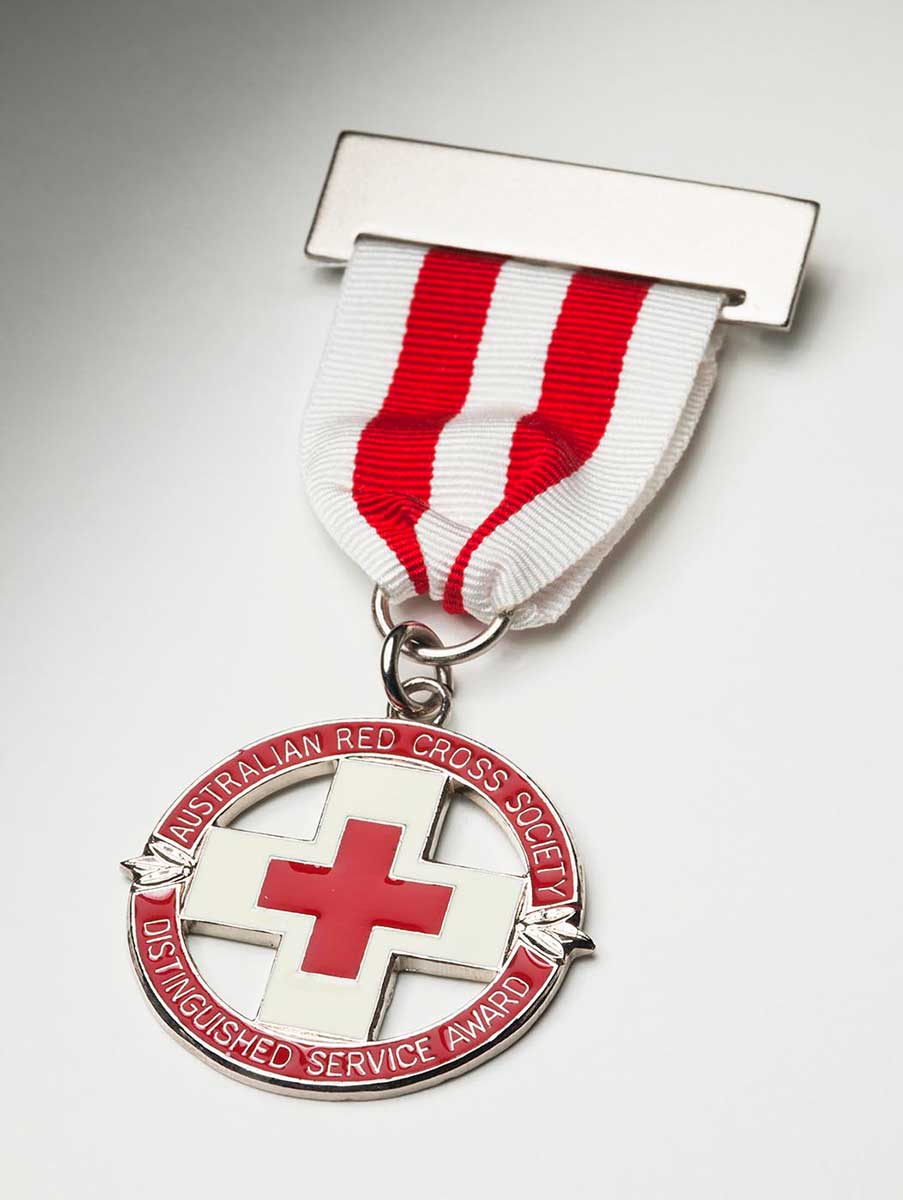
‘You can bet your life she was holding someone’s hand’
In 2001 Yvonne Kennedy was nearing the end of a holiday to Canada and the United States. She was a passenger on American Airlines Flight 77, which had departed Washington en route to Los Angeles.
Yvonne intended to join a flight to Hawaii and then return home to Sydney on 15 September.
On 11 September hijackers took control of Flight 77 and forced passengers and crew to the back of the plane.
Forty-five minutes later the plane slammed into the United States defence headquarters, the Pentagon, travelling at about 853 kilometres an hour. All 59 people on board the plane died instantly.
One of Yvonne's friends, Edithe Piggot, then chairman of the Australian Red Cross, NSW, reflected on how she thought Yvonne would have reacted to the crisis on the plane.
Edithe told a journalist she thought that Yvonne would have been stressed and nervous, but that she would still have been trying to help other people: 'You can bet your life she was holding someone's hand and comforting them'.
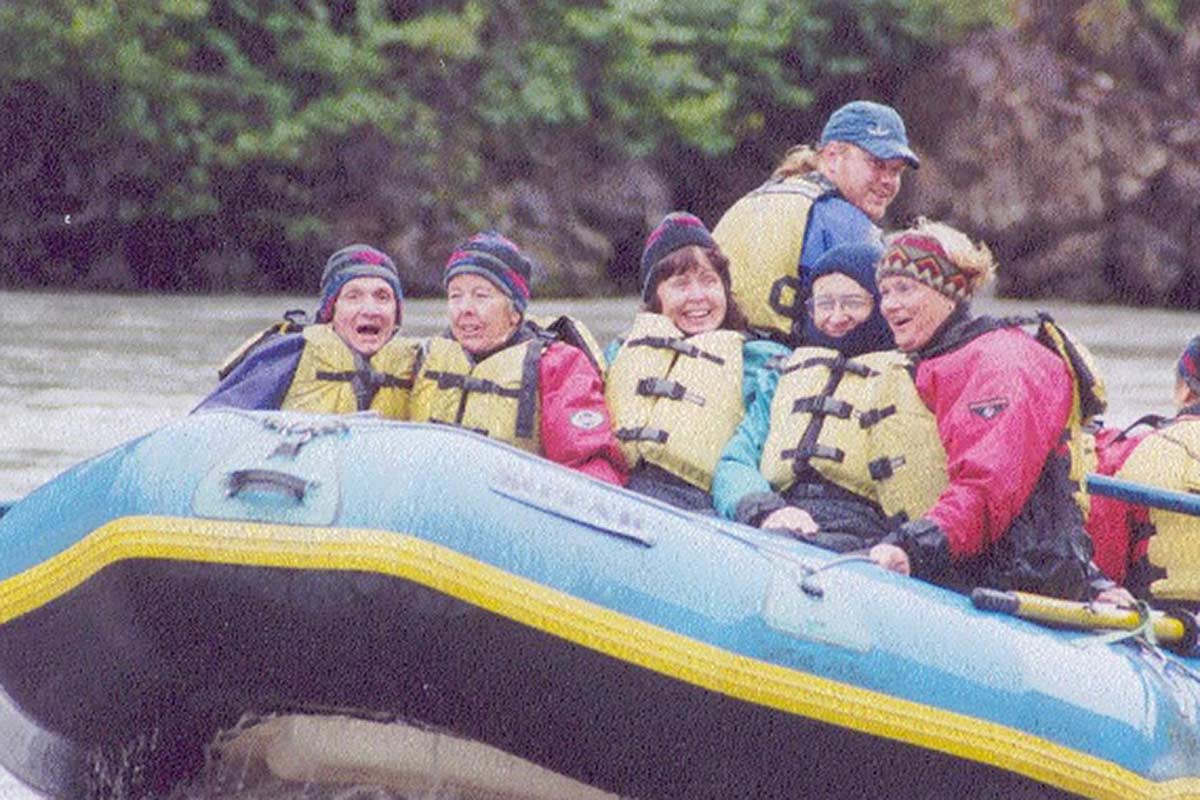
Retirement trip of a lifetime
Yvonne's tour came after 25 years working for the Red Cross Voluntary Aid Service Corps and 10 years on the staff of the Australian Red Cross, NSW.
Her trip took in Alaska, Canada and America. She visited places like the Canadian 'Rockies' and enjoyed new adventures, such as white water rafting.
One of Yvonne's friends on the tour later wrote of their trip, 'we ate like royalty, stayed in beautiful hotels, saw unique wildlife and awesome scenery. There was such fun.' She goes on to say that indeed, it was 'the trip of a lifetime'.
Another friend on the tour relived similar sentiments in a letter of condolence that she wrote to Yvonne's sons:
My memories of Yvonne was she was always racing to get the next picture, or trying the special foods of the district, or just fitting as much into the day as she could. She talked us into the rapids ride in the Denali National Park. Couldn't believe that we did it, but had a great time.
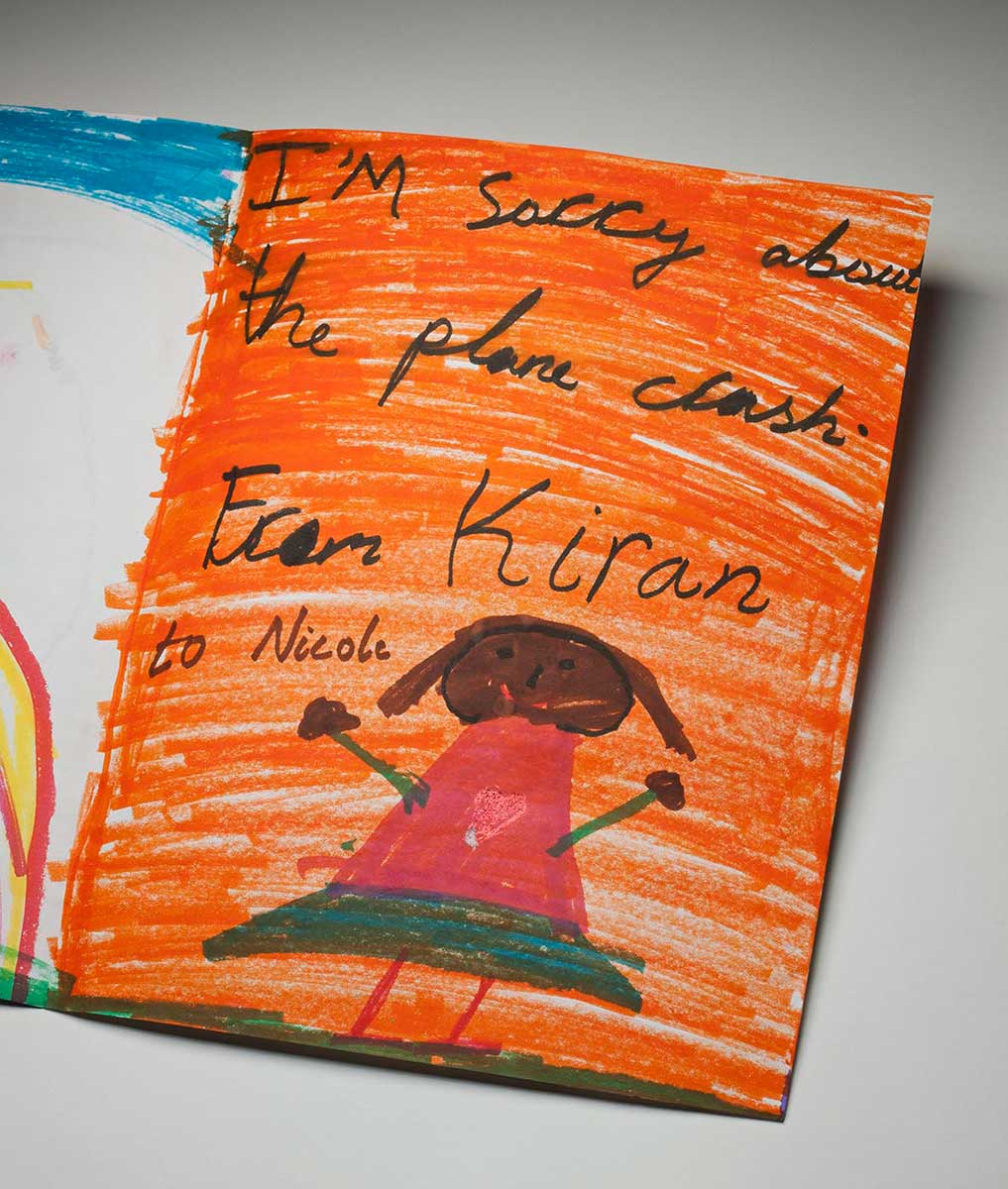
Outpouring of love
Several objects donated to the National Museum by the Kennedy family illustrate expressions of love and grief after the 9/11 attacks.
More than 1,000 people attended a memorial service for Yvonne at St Mary's Cathedral in Sydney on 19 September, 2001. Red Cross colleagues compiled a condolence album after the service and presented it to the Kennedy family.
National Museum curator Carol Cooper said the album showed a great outpouring of love for Yvonne:
Along with numerous sympathy cards donated to the National Museum, it provides a lasting tribute to Yvonne Kennedy as a courageous and loving woman, and a tireless and respected member of the Australian Red Cross.
Many remember her laughter, enthusiasm, kindness and devotion. She is repeatedly described as possessing a great spirit, and 'living life to the full', as having been 'a joy, and a privilege to know', 'a real character', 'a fine lady', someone 'who would be greatly missed, but never forgotten'.
Yvonne visited some of her second cousins whom she had not seen for many years while she was in America. Following the 9/11 tragedy, one of these cousins sent the Kennedy family a collection of children's cards.
One illustrated card, from 'Kiran to Nicole', says, 'I'm sorry about the plane crash.' This personal tribute to a member of Yvonne's extended family is among thousands of cards made by schoolchildren across America for the families of victims in the wake of September 11.
As the White House letter of condolence from George and Laura Bush concludes, 'We pray that the national outpouring of love and support helps comfort you in your sorrow.'
Personal objects recovered
A significant part of the National Museum collection are Yvonne's personal objects, recovered from the Pentagon crash site. These include her wallet, keys, various identity and credit cards, US currency and other small personal items.
The recovery process at the Pentagon was similar to that of the Staten Island evidence recovery site for the World Trade Center. There, approximately 27,000 pieces of personal property were recovered, identified, de-contaminated, catalogued and returned to their owners or to relatives of those who died.
At the Pentagon, members of the army, navy and marine corps museum staff in the Washington area were deployed to the Pentagon to help with the recovery of personal material. It was cleaned and processed for return if appropriate identification could be established.
Commemorating 9/11 victims
Another element of the Yvonne Kennedy collection at the National Museum relates to several ceremonies and memorials at the Pentagon.
An impromptu memorial was set up on a hill at the Navy Annex overlooking the Pentagon soon after the crash of American Airlines Flight 77. One month after the attack, 25,000 people attended a memorial service at which President Bush vowed to quickly rebuild the Pentagon.
On 12 September 2002 the American Heroes Memorial and Chapel was opened on the site where Flight 77 had crashed into the building. The memorial includes a book of photographs and biographies of the victims, with an entry about Yvonne and her family in Australia.
The 9/11 terrorist attacks marked the beginning of the 'war on terror'. Australia joined the United States and its allies to contribute forces to the invasion of Afghanistan and later Iraq.
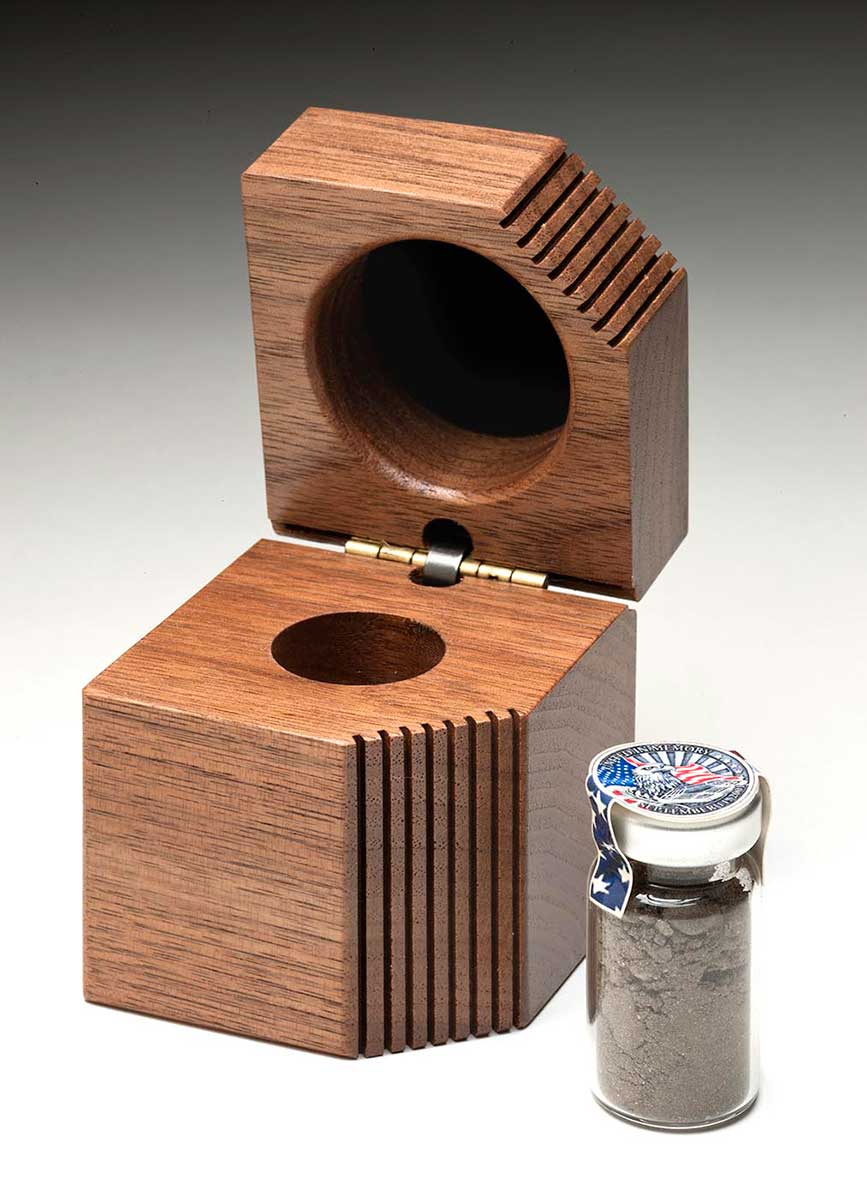
Memorial objects
The Yvonne Kennedy collection at the National Museum includes objects gifted to the victims' families by the Pentagon in 2002.
The chapel at the Pentagon memorial has a stained glass window incorporating the American eagle, elements of the Pentagon design and the American flag.
A smaller replica of this window in a pentagonal frame, with the words 'United in Memory, September 11, 2001', was given to the Kennedys.
At the same time they also received a timber presentation box with an etched design of the pentagon on the hinged lid. Inside the box is a glass vial filled with soil from the crash site.
Both of these commemorative items are included in the Kennedy family gift to the Museum.
Arlington National Cemetery memorial
On 12 September 2002 at the Arlington National Cemetery, a caisson wagon drawn by six horses carried a single casket to a hill within view of the rebuilt Pentagon. Hundreds of family members filed past the grave site.
United States Defense Secretary Donald Rumsfeld told the mourners, 'While there's nothing one of us can do to bring back those loved ones, we can celebrate who they were, how they lived their lives and remember how their lives were lost.'
In a personal statement about the collection provided to the National Museum, the Kennedy family acknowledge their pride that Yvonne is honoured at the Pentagon Memorial, and at the 9/11 Memorial Museum in New York.
They are also proud that her name is inscribed on the large, 5-sided granite marker for the 184 victims of the Pentagon crash whose remains are buried in the Arlington National Cemetery in Washington, DC. Among the 275,000 people buried there are president John F Kennedy and his family, and the crew of the destroyed space shuttle Challenger.
Pentagon Memorial
Another group of objects in the Yvonne Kennedy collection relate to the Pentagon Memorial park officially dedicated on 11 September 2008.
On dedication day, 3000 large American flags were flown atop 2.4 metre poles as part of the Healing Field display. Among the flags, 184 bore ribbons with the names of the victims from the Pentagon and Flight 77.
These flags were donated by the Pentagon Memorial Fund organisers and later distributed to the victims' families. Members of Yvonne's family attended the dedication ceremony and her flag and a bench cover from the memorial were included in their donation to the National Museum.
The privately-funded Pentagon Memorial is a contemplative space where visitors can reflect on the lives lost on September 11.
The small park features memorial benches and trees, very close to where the plane struck the building. The cantilevered benches are individually named memorials to those who died.
They have been aligned with the plane's flight path into the building, and arranged according to whether the victim was on the plane, or in the building at the time.
If the victim's nameplate on the bench can be read with the Pentagon in the background, the person died in the building. In Yvonne's case, the sky forms the background, symbolising her death on Flight 77.
Underneath each bench is a small self-contained pool of trickling water, designed to create a soothing atmosphere. The 85 trees clustered around the memorial benches will grow to provide a canopy of shade and protection for the memorial in the years to come.
Yvonne Kennedy's Red Cross work
The Kennedy family's donation to the National Museum includes many of Yvonne's Red Cross badges, medals and pins.
Her association with the Red Cross began in 1976 when she joined the Hills District Voluntary Aid Detachment. She trained in first aid, resuscitation and home nursing, continuing a tradition established in Australia in 1914.
Yvonne was an active volunteer. She offered assistance at the Far Eastern Games for the disabled in 1977, and worked in disaster coordination at the Thredbo mudslide of 1997, and the NSW rural bushfire disasters of 1994 and 1997.
In 1982 Yvonne established a new Holroyd Volunteer Aid Detachment and became its first commandant. In 1986, still as a volunteer, she was elected to the divisional council, or governing body of the Australian Red Cross, NSW. She held that position until she joined the staff of the Red Cross in 1990.
In 1991 Yvonne became NSW State Coordinator of the Voluntary Aid Service Corps, a position she held until her retirement in 2000. Yvonne was a great networker and knew people throughout the Volunteer Aid Detachment.
She also forged relationships with other volunteer organisations including the NSW Rural Fire Service, Surf Life Saving Australia and the Royal Life Saving Society, St John's Ambulance and the Australian Sports Medicine Foundation.
Yvonne's record of service was rewarded with the presentation of her long service medal in 1991, and the first bar in 1996.
On World Red Cross Day, 8 May 2001, her contribution to the Red Cross was acknowledged with the Society's Distinguished Service Medal. This award was bestowed soon after her retirement. At the same time Yvonne was elected executive officer of the Voluntary Aid Service Corps, a position she was looking forward to taking up when she returned from her holiday.
Curator Carol Cooper said the Red Cross as an organisation was the antithesis of a terrorist body. 'Essentially the Red Cross is about fostering and caring for life, about making a difference, locally and globally. The Red Cross is one of the oldest and most prestigious volunteer organisations in Australia'.
Yvonne Kennedy award
A tour member who met Yvonne on holiday later wrote to the Red Cross:
I wanted her work mates to know how proud she was of the Red Cross and the work she did for the organisation. She talked so much about her sons; but as well, she spoke of her wonderful colleagues and friends in the Red Cross. The Red Cross was a huge part of her life. She spoke of how she hated retiring but fully intended to keep working in a voluntary capacity.
The Red Cross continues to recognise Yvonne's contribution with a memorial trophy, awarded annually for the most outstanding contribution to the Australian Red Cross Voluntary Aid Service Corps. The first recipient was Yvonne Cassidy.
Yvonne Kennedy and Yvonne Cassidy were friends of 25 years and are still affectionately known by their Red Cross colleagues as 'the two Vonnies'.
Yvonne Cassidy, as an advisory board member and continuing volunteer with the Red Cross in Sydney, helped arrange the donation of a Red Cross uniform for the display of Yvonne Kennedy's badges and medals at the National Museum.
Museums as custodians
Curator Carol Cooper said the Yvonne Kennedy collection helped the National Museum to reflect on the human dimension of September 11. The donation also complements an Australian flag retrieved from the wreckage of the the World Trade Center.
In the United States, the 9/11 Memorial & Museum officially opened on 11 September 2011. Director Alice M Greenwald said, 'The National September 11 Memorial & Museum are being built to honour memory and in doing so to educate for a better future.'
Greenwald believes in museums as 'custodians of memory', with the mantle of moral authority to document the consequences of terrorism on individual lives and communities:
The Museum will be about each of us, about what it means to be a human being, and what it means to live in a complex global community at the start of the 21st century.
In our collection
